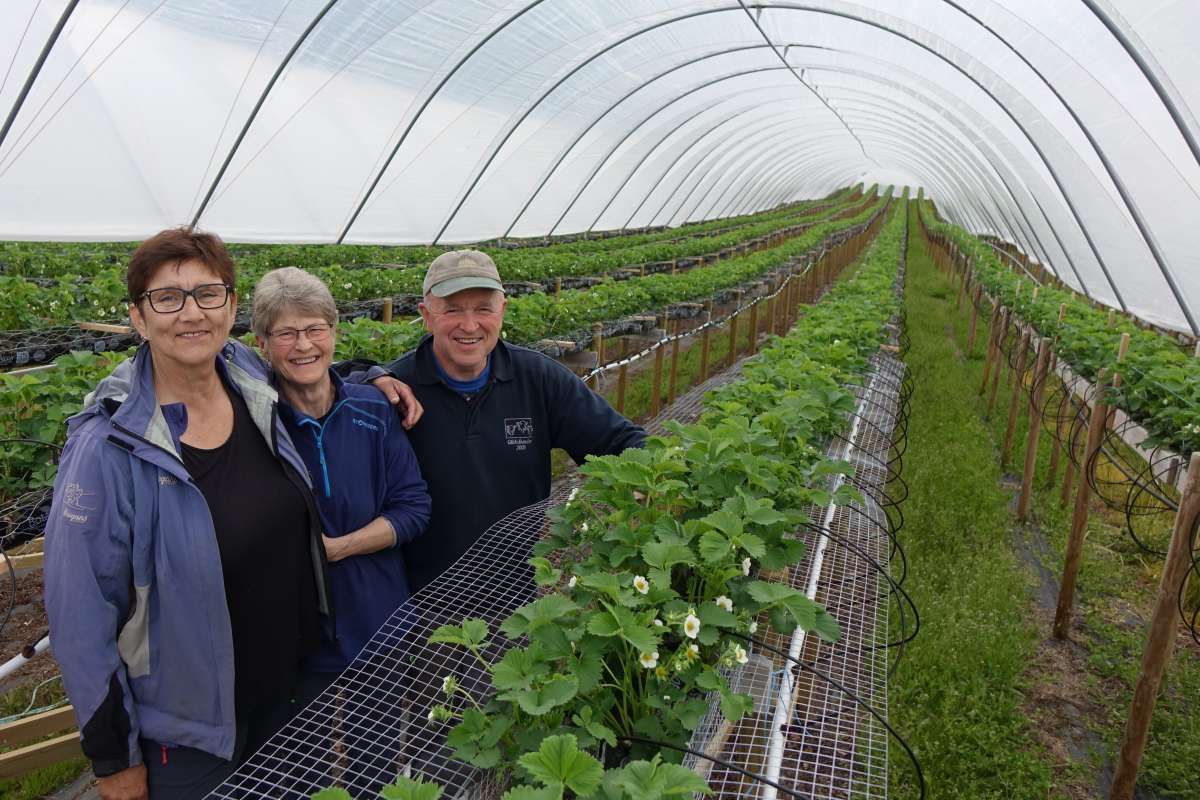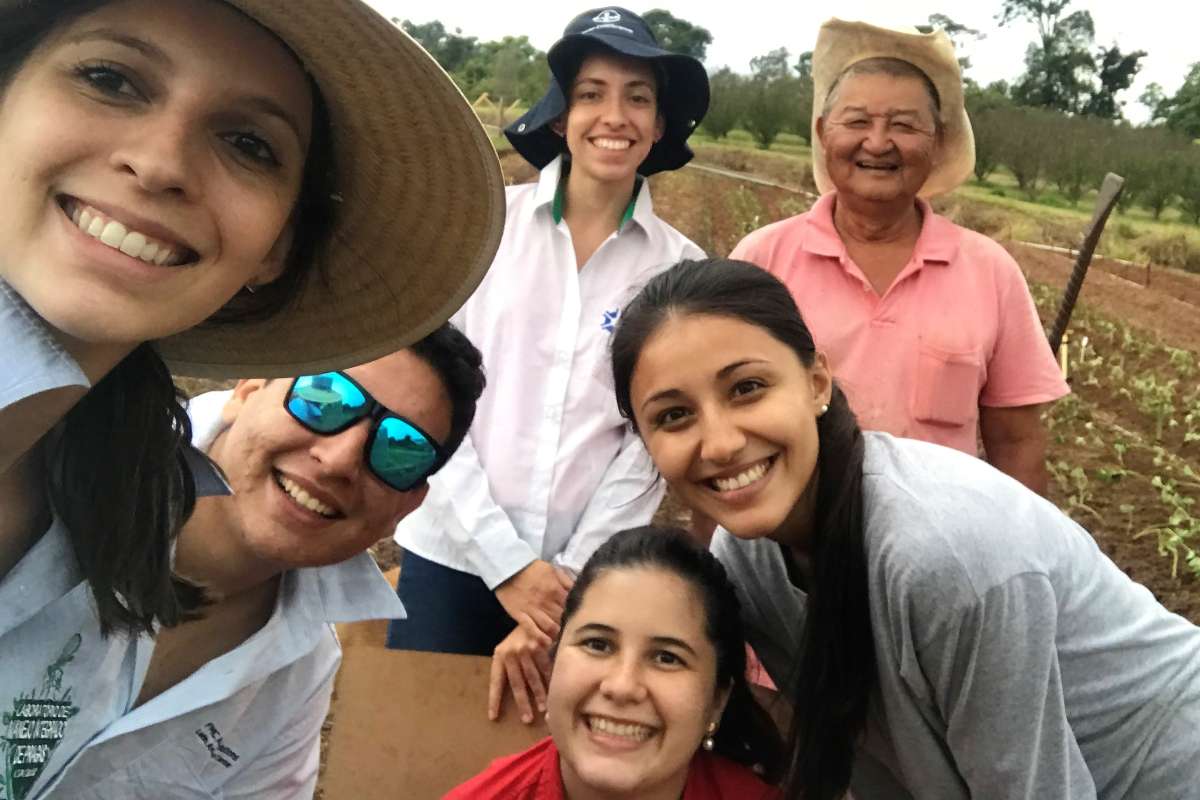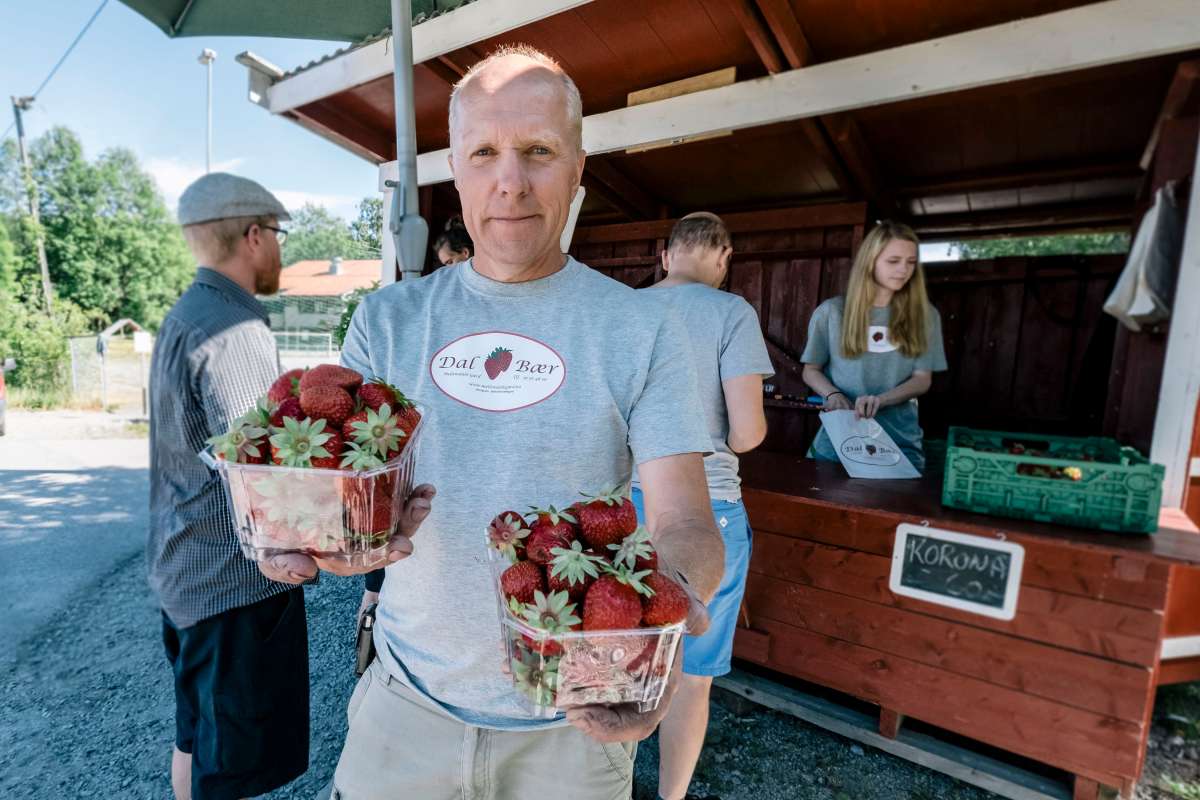Improved control of viruses in strawberries and raspberries
.jpg?quality=60)
To know which viruses we have in raspberries and strawberries, what comes with them, and what spreads, is important for carrying out knowledge-based control. Photo: Anette Tjomsland Spilling.
Strawberry and raspberry plants get infected with many different viruses that can be challenging to distinguish. Norwegian and Czech researchers are now collaborating to gain new knowledge on how these viruses spread and how to diagnose them.
Viruses in raspberries and strawberries can lead to significant crop losses for growers. The impact can be exacerbated when multiple viruses occur together. A stable production of high-quality berries requires plant virus diagnostics, virus cleansing, as well as cultivation and secure storage of healthy mother plants.
In the Kappaberry project, NIBIO is collaborating with partners in Norway and Czechia to increase expertise on viruses in strawberries and raspberries. The project is led by the Biology Centre CAS in the Czech Republic, and the goal is to enhance production potential as the climate changes. This will be achieved through virus-tested high-quality mother material, improved control of viral diseases, and ensuring the cultivation of fresh, valuable plant material.
Challenges with imports and climate change
Raspberries are particularly vulnerable to virus problems in Norway. This is because the country has a lot of wild raspberries that serve as reservoirs for viruses and vectors. Additionally, raspberry plants remain in the field for a long time. Therefore, the plants are exposed to many years of infection pressure before being replaced. The most significant viruses are spread by aphids, mites, nematodes (roundworms), or through seeds and pollen.
Since strawberry plant imports from other European countries was opened in 2015, there has been a concern that viruses may accompany imported plant material. Strawberry viruses can be spread with plants and propagation material, but aphids and nematodes in the soil are also important vectors for transmission.
Climate change may lead to the establishment of new viruses and vectors in Norway, or existing vectors may have increased prevalence or activity. In addition, altered and more unstable climate conditions pose a challenge because they can result in increased or changed stress for perennial plants, making them more susceptible to viruses.
"To carry out knowledge-based control, it is important to know which viruses we have in strawberries and raspberries, and what spreads them," says Dag-Ragnar Blystad, senior researcher at NIBIO.
"In this context, diagnostic tools are crucial in addition to knowledge about which insects spread the viruses. Healthy plant material is also crucial to combating viruses. Clean plant material must be used when establishing new berry fields.
"Our main focus in the project is to gather more mapping data so that we can compare changes over time, especially as the climate is changing. We also compare Norwegian and Czech data to examine differences," he explains.

Improved diagnostics
Both strawberries and raspberries are infected with many different viruses, and it can be challenging to distinguish between these various viruses. New diagnostic methods are therefore a central theme in the project, according to Blystad.
“It is not possible to diagnose viruses in strawberries and raspberries based on symptoms alone. You must use special testing methods.”
Previously, researchers have employed biological testing, but there have been significant improvements.
“We have established PCR tests (molecular lab-based tests) for a total of ten viruses that infect raspberries. This way, we can detect viruses in all types of plant tissues and even in aphids that serve as vectors. This is a sensitive and precise method,” says the senior researcher. He adds that the development of these testing methods has been an important part of the collaboration with the Czech Republic.
The researchers are also conducting extensive mapping of viruses in cultivation fields. They have tested several hundred samples of strawberries from Norway and raspberries from various locations in both Norway and the Czech Republic. Blystad explains that they have discovered a new virus in raspberries, which has been found in both the Czech Republic and Norway.
“So far, it seems that this virus does not have a significant effect, but in the future, we will examine how it interacts with other viruses in raspberries,” he says.
.jpg)
Virus vectors and clean plant material
Another theme addressed is virus vectors.
“We want to increase knowledge on insects and mites that can act as vectors for plant viruses in strawberries and raspberries,” informs Blystad.
He explains that a Czech Ph.D. student has spent two months in Norway, among other things, searching for thrips and mites that can function as virus vectors.
“Cleaning plant material from viruses is time-consuming. Therefore, new and better cleaning methods are necessary,” he says.
“To improve cleaning methods, we also have a study of viruses inside the tissue. This research is conducted by a Ph.D. student on a guest stay from China.”
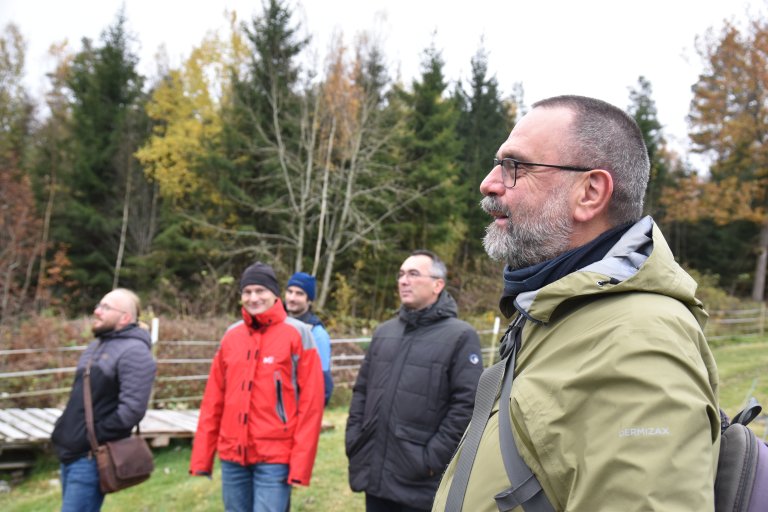
Cryopreservation preserves diseased and healthy plants
Cryopreservation is defined as the storage of living cells, tissue pieces, organs, and organisms at very low temperatures, usually in liquid nitrogen at –196 °C.
“In the project, we work with both cryopreserving healthy plant material and plant material infected with viruses.
“It is important to preserve living, virus-infected plant material, both for positive controls in testing work and for future studies of virus-host relationships. A master student has looked into the cryopreservation of strawberries infected with viruses. This is very exciting work,” comments Blystad.
According to the senior researcher, cryopreservation is also the best way to preserve clean plant material.
“In the project, we collaborate with Sagaplant on this. Cryopreservation ensures that mother plants are protected against plant diseases and enables cost-effective and secure preservation of core plants and plant genetic resources.
“The project includes testing a new, specially designed "cryo box provided by GeneEver" Here, we will store virus-infected plant material of strawberries and raspberries,” Blystad concludes.
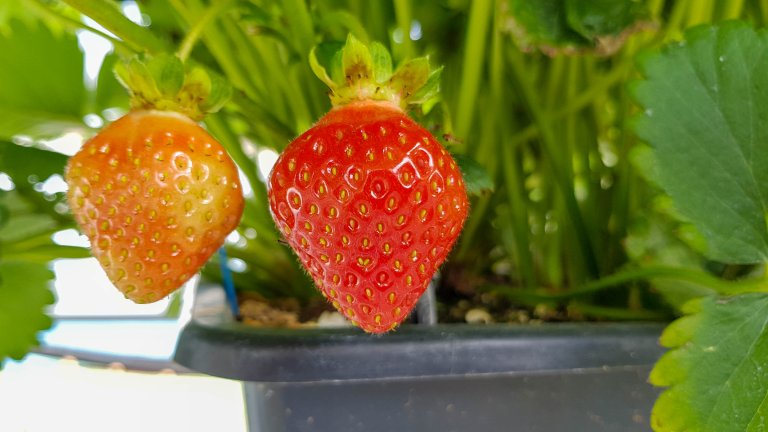
Contacts

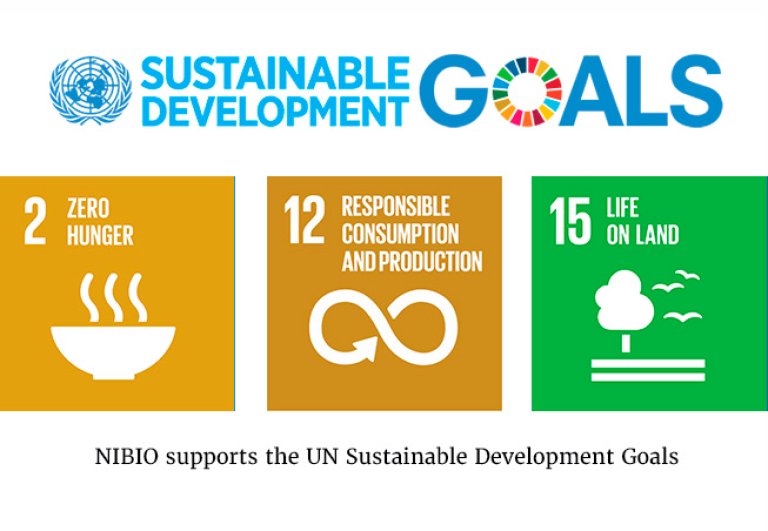
WHAT IS A VECTOR?
A vector is a carrier that spreads infection from an infected plant to a healthy plant.
Aphids are one of the key vectors for plant viruses, transferring viruses from a diseased plant to a healthy one as they feed on plant sap. Additionally, mites, nematodes, and fungi are important vectors.
Source: Norwegian Food Safety Authority (Mattilsynet)
KappaBerry project
The project „Healthy berries in a changing climate: development of new biotechnological procedures for virus diagnostics, vector studies, elimination and safe preservation of strawberry and raspberry“ benefits from a grant from Iceland, Liechtenstein and Norway through the EEA Grants and the Technology agency of the Czech Republic within the KAPPA Program.
The aim of the project is to increase the production potential of berries in a new and challenging climate by using high-quality virus-tested mother plants, improving virus diagnosis and control approaches, study of virus vectors, and better safeguarding of valuable plant germplasm and plant health.

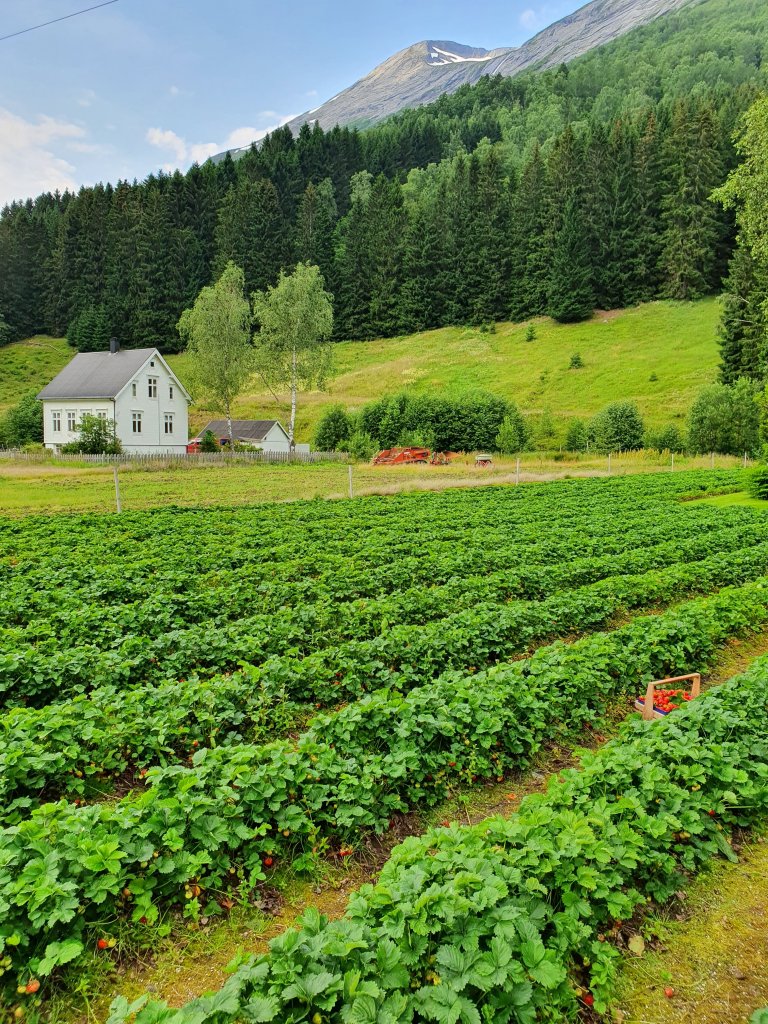
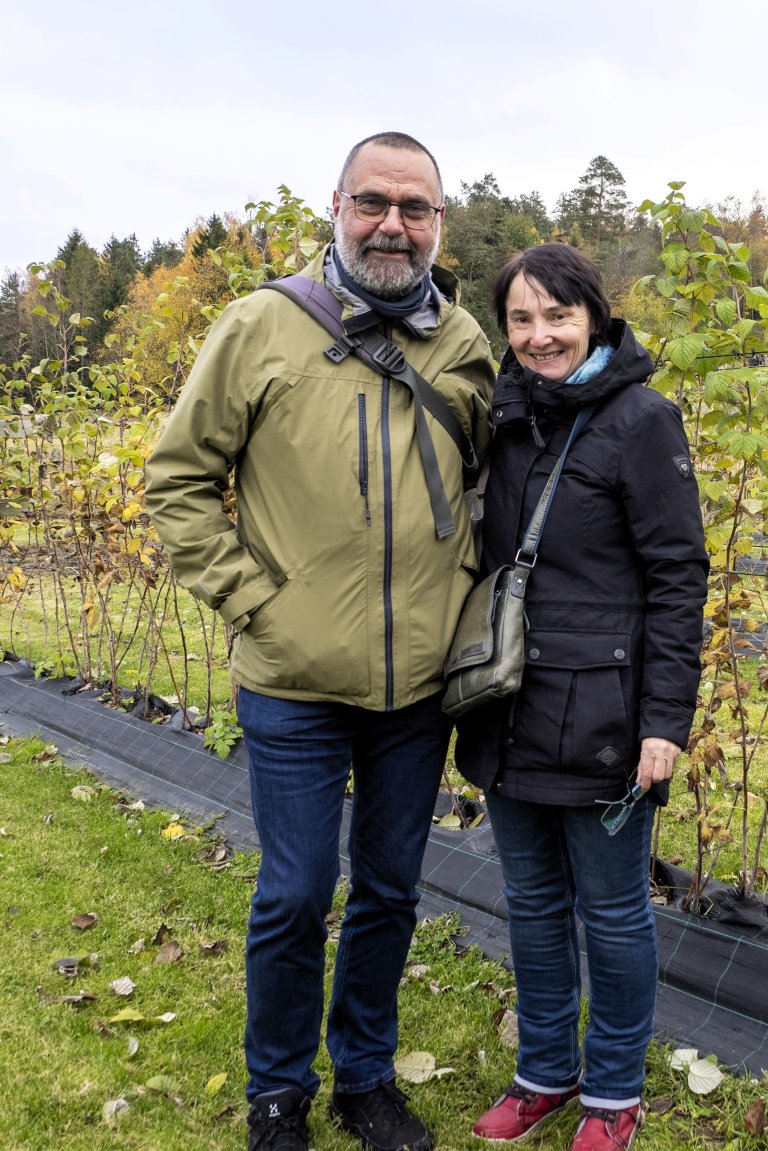
_cropped.jpg)

Contacts



